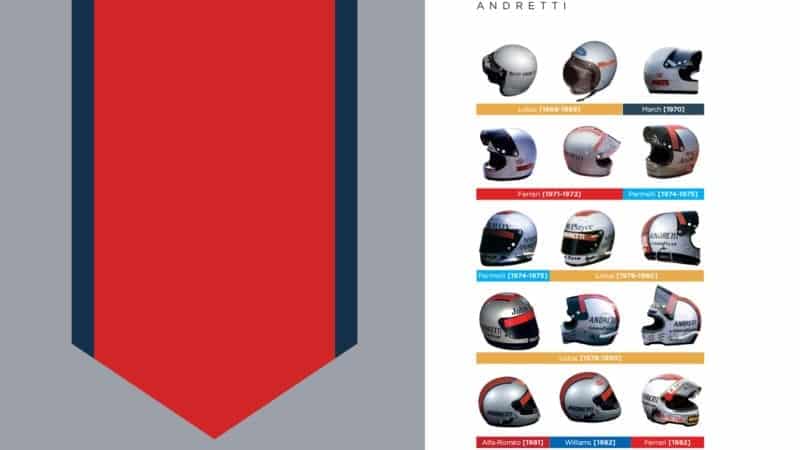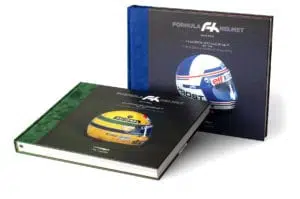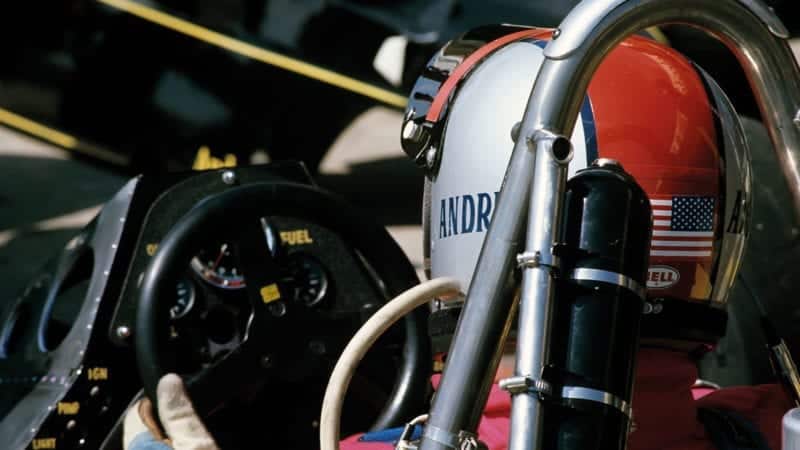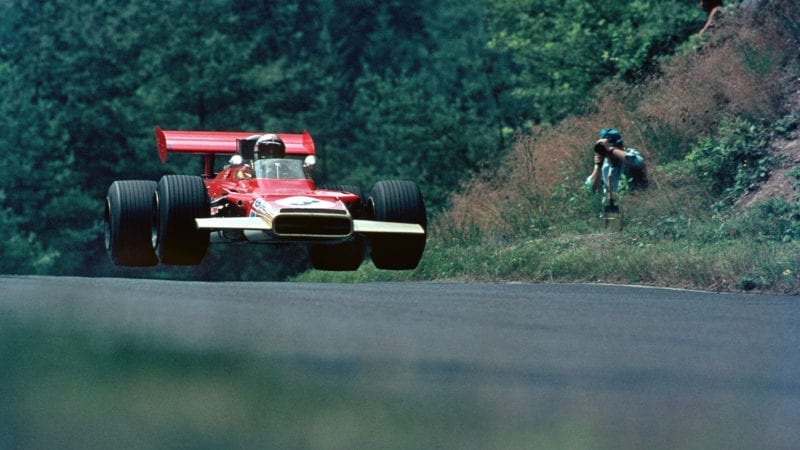When I won the Indianapolis 500 in 1969, I was wearing an open-face helmet with a scarf to protect my skin and my teeth and goggles to protect my eyes. That was the same year that Dan Gurney became the first driver to wear a full-face helmet. As the pioneer of closed helmets, Dan had to deal with various issues to develop a helmet that was safe as well as comfortable. Some of the problems: the shield would not open; there was a heat factor, ventilation issues and fogging.
The first full-face helmets were also very heavy. While there was more protection for your face, under a hard impact you could potentially injure your neck. So the objective was to find material to make the helmets lighter without giving up the protection. Carbon fibre technology solved the problem.
Memories
I gave away most of my helmets, including the one from my F1 championship year in 1978 which now belongs to my tyre man! Jorge Lorenzo is always asking me for it. I gave the helmet I wore in my last IndyCar race in 1994 to my chief mechanic. But I still have my Indy 500 winning helmet from 1969 and I think I have the helmet from my first F1 race in Watkins Glen in 1968. I never collected helmets like my grandson Marco does.
“I gave away most of my helmets, including my F1 championship one. Jorge Lorenzo is always asking me for it!”
In 1974, during the F5000 race in Watkins Glen, my helmet was stolen while my car was being pushed to the grid. Johnny Rutherford didn’t make the race so I asked to borrow his helmet. It didn’t fit very well but it’s all I had and I won that race. I still tease Johnny that it was the only time his helmet won on a road course.
The stars and its stripes

The evolution of Andretti’s crash helmet through his five decade-long career
Bruno Bayol / Formula Helmet
During the ’60s and ’70s, drivers were easily identifiable by their helmet design. You didn’t need to look at the car number. In 1972, one of our sponsors was Viceroy with a distinguished design that I liked. It had a red chevron outlined by stripes in gold, which I changed to blue and wore for the rest of my career. My son Michael adapted the basic look and Marco has yet another variation on it. Both Michael and Marco incorporated parts of the American flag in their design but they still look like derivatives of my original helmet. For me, it’s very important. It’s our signature.
America and Italy
While I am proud to have Italian blood, I am also proud to be American. My life would not have been the same had we stayed in Italy. At the end of World War II, our hometown of Montona became a part of the communist Yugoslavia. Residents of Montona were left with two choices: succumb to communism or leave. We decided to leave and ended up in a refugee camp in Lucca for eight years.
For me, that was age 7 to age 15 in the camp. We moved to America when I was 15 and that is where my path was determined. It was in America where I found opportunities. In America I lived a fuller life. But I still have a deep and lasting affection for Italy. And 1977 holds a special memory for me because that’s the year I had Formula 1 victories in both America and Italy. I won the US Formula One race in Long Beach in California and the Italian F1 race at Monza.

Formula Helmet
Bruno Bayol
€85
Formula Helmet by Bruno Bayol examines the fascinating history of the F1 driver’s crash helmet, with particular focus on closed face designs from 1969 to 1999. As well as providing a history and development of brands such as Arai, Bell and GPA, the book features captivating driver accounts of how their helmet designs came to be and when they needed them most.
Three-time world champion and safety pioneer Jackie Stewart provides a heartfelt forward, whilst stories from Mario Andretti, Mika Häkkinen and Jacques Villeneuve others are as charming and entertaining as they are insightful.
Numerous original helmets were examined and photographed at close quarters, providing exquisite detail throughout the book. It also includes pictures from world-renowned photographers Bernard Asset and Bernard Cahier capturing iconic crash helmets in racing action.



